![]() Please click the drop-pins below to see our study systems and scroll down for more details.
Please click the drop-pins below to see our study systems and scroll down for more details.
Understanding the complexities of global change requires a variety of approaches. Our work combines select case studies along a latitudinal gradient from the High Arctic to the tropical rainforests of Central America with the development of new modelling and statistical approaches for disentangling the mechanisms driving change, forecasting likely future impacts of global change, and/or developing suitable mitigation and management strategies. Current efforts primarily focus on how climate change and land use change impact the population and community dynamics of wildlife, their interactions with parasites, and the spread of disease. Please see below for more information on our current modelling approaches and scroll down for more information on our current study systems.
Current Research Directions: Modelling
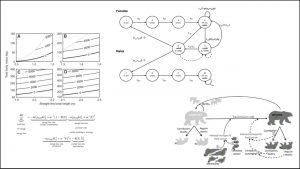 Behavioral, Physiological, Population, and Community Dynamics Models for Understanding Climate Change and Land Use Change Impacts on Wildlife
Behavioral, Physiological, Population, and Community Dynamics Models for Understanding Climate Change and Land Use Change Impacts on Wildlife
Mathematical models have been used for centuries to understand ecological dynamics, such as population growth, community assembly, and disease transmission. Depending on their objectives, these models can take many forms, but often aim to estimate higher-level dynamics from underlying processes. Conservation biologists, for example, often use models to project future population abundances from estimates of individual survival and reproduction, and public health managers use models to project the progression of an epidemic from estimates of transmissibility and other parameters. All such projections, however, are complicated in a changing environment where it is often unclear how model parameters (e.g., reproduction, survival, infection rates) might change under projected, but not yet observed, environmental conditions. Our work combines classical population and community dynamics models with models of individual behavior, physiology, and resource use, to overcome these limitations, allow estimating how population and community dynamics might change in changing environments, and aid their proactive management. Please see here for representative publications outlining applications to understanding polar bear physiology (3), population dynamics (10), disease dynamics (29), and climate change impacts (5, 23); please see below for the development and application of similar frameworks to host-parasite dynamics and disease.
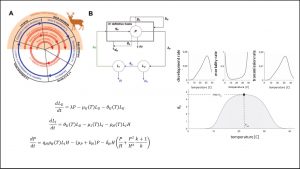 Thermal Host-Parasite Models for Understanding How Temperature Changes Affect the Population and Community Dynamics of Wildlife and Their Parasites
Thermal Host-Parasite Models for Understanding How Temperature Changes Affect the Population and Community Dynamics of Wildlife and Their Parasites
Temperature changes can influence the population dynamics of hosts and their parasites in multiple ways. Many parasites, for example, spend part of their lives free-living in the environment and/or within ectothermic intermediate hosts (e.g., mosquitoes) before infecting their final host. During these times, their growth, their development, their chances of infecting a host, and even their survival, all depend on temperature, often in complex and non-intuitive ways. Warmer temperatures, for example, tend to increase the rates at which parasite larvae develop but also reduce their probability of survival to adulthood. Our work aims to develop frameworks that allow estimating the net effect of these complexities and anticipating climate change impacts on the host-parasite dynamics, including in wildlife, livestock, and human systems. Please see here for representative publications outlining modelling frameworks (7, 12), empirical tests (14, 19), and broad-scale generalizations across systems (32); please see Study Systems below for applications.
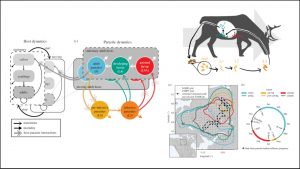 Spatial Host-Parasite Models for Understanding How Climate Change and Land Use Change Alter Host Movement and the Transmission of Parasites Across Landscapes
Spatial Host-Parasite Models for Understanding How Climate Change and Land Use Change Alter Host Movement and the Transmission of Parasites Across Landscapes
Climate change and land use change are expected to fundamentally alter the geographic distributions and ranges of micro- (e.g., bacteria, viruses) and macro-parasites (e.g., parasitic worms, biting insects) – with substantial implications for the health of humans, livestock, and wildlife. For example, wildlife and parasite distributions are generally expected to shift poleward as the climate warms: disappearing from areas that become too warm for the organism or the species it relies on (e.g., intermediate and/or definitive hosts for parasites), and colonizing areas that have previously been too cold but now have temperatures that are within its comfort zone. Within these climatic constraints, the occurrence and movement of both wildlife and parasites depends on the distribution of suitable habitats, which in turn is altered continuously by human activity. Habitat fragmentation, for example, can increase contact rates between different wildlife species and humans and, thus, the risk of parasite spillovers; facilitate the invasion of new species and diseases; and/or disrupt animal migrations, with corresponding changes in parasitism pressure. Our work aims to develop modelling frameworks that capture these complexities and allow anticipating the joint effects of climate and land use change on host-parasite dynamics. Please see here for representative publications outlining model developments (16, 13), a unifying framework for the parasite dynamics of migratory hosts (22), and applications to barrenground caribou and their parasites (35).
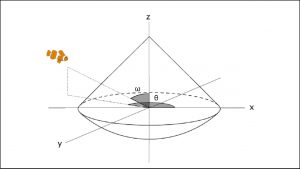 Mathematical and Statistical Models for Analyzing Ecological Monitoring Data, such as from Camera Traps
Mathematical and Statistical Models for Analyzing Ecological Monitoring Data, such as from Camera Traps
Camera traps and other remote monitoring tools can provide a wealth of data on the population and community dynamics of wildlife. Motion-triggered, they provide observations of animals passing by the camera, allowing direct observations as well as indirect inferences that go far beyond the brief snapshot of a photo. Movement rates, demographic parameters, population abundances, interactions with other species, disease dynamics, and community dynamics, can all be inferred from time series of camera trap photos, with the help of mathematical and statistical models. Our field work relies on camera traps for tracking wildlife-parasite dynamics in Yukon, the Greater Toronto Area, and Costa Rica (see Study Systems below), and we apply/develop mathematical and statistical models to support these efforts – for example, using movement and encounter rate models to infer population densities, habitat use, and interaction and parasite transmission rates within and among species.
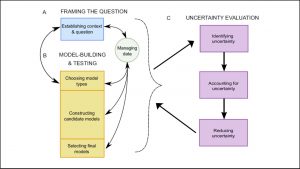 Mathematical and Statistical Models for Forecasting Ecological Dynamics in Changing Environments
Mathematical and Statistical Models for Forecasting Ecological Dynamics in Changing Environments
Under construction. Selected publications: 18, 27
Current Research Directions: Study Systems
Climate Change and Polar Bears
Polar bears are vulnerable to climate change because they require sea ice as a platform for hunting seals. Longer ice-free periods mean longer fasts for polar bears in affected regions, leading to declines in body condition, reproduction, survival, and ultimately, abundance. Our work, currently led by Postdoctoral Fellow Louise Archer, combines physiological and ecological modelling with data from polar bear populations around the world to understand how past, current, and future changes in sea ice affect their population dynamics and viability. Please see here for representative publications concerning polar bear physiology (3), their population dynamics (2, 10), disease dynamics (29), and climate change impacts (5, 23).
Climate Change, Muskoxen, Caribou, and Their Host-Parasite Dynamics
Several parasites and parasitic diseases are expected to expand their ranges poleward as climate change continues to warm the planet. One example is found on Victoria Island in the Canadian Arctic, where two lungworms of muskoxen and caribou have established in the early 2000s and continued to expand their ranges northwards since then. Our work, currently led by PhD Candidate Alexander Nascou, combines physiological and population dynamics modelling with empirical data, collected by our collaborators at the Kutz Lab (University of Calgary), to disentangle the respective roles of climate change, host movement, and parasite life histories in shaping the observed range changes.
Climate Change, Ungulate Communities, and Winter Ticks (Yukon)
Winter ticks (Dermacentor albipictus) are blood-feeding parasites that are commonly found on cervids such as moose, elk, caribou, and deer. Moose are particularly susceptible to severe tick infestations, which can lead to hair loss, anemia, poor body condition, and sometimes the death of the host. Although winter ticks are regularly found throughout North America at latitudes below 60°N, they have recently begun colonizing areas further north. Our work, currently led by PhD Candidate Emily Chenery, combines citizen science, laboratory experiments, field sampling and population dynamics modelling to determine the current distribution and abundance of winter ticks in Yukon, their sensitivity to temperature and precipitation changes, their host preferences and dynamics of spread, their impacts on hosts, and possible mitigation and management strategies.
Global Change and the Host-Parasite Dynamics of Migratory Animals
Animals migrate for various reasons, including to escape harsh climates and to track food resources. Animal migrations can also have substantial consequences for the health of a population and the spread of their parasites. Migrations might, for example, allow animals to escape their parasites by temporarily abandoning heavily infested habitats (e.g., breeding grounds), but can also spread parasites to currently unaffected areas. Climate change and land use change are affecting these dynamics in multiple ways, for example, by altering the suitability and connectivity of habitats along migratory pathways – with complex implications for the spread of parasites and impacts on hosts. Our work seeks to disentangle the mechanisms that shape these dynamics, and how global change alters them, by developing and applying spatial host-parasite models to select case studies, such as the mass migrations of barrenground caribou in the Canadian Arctic.
Urbanization, Mammal Communities and Their Host-Parasite Dynamics (Greater Toronto Area)
Under construction.
Land Use Change, Mammal Communities and Their Host-Parasite Dynamics (Osa Peninsula, Costa Rica)
Land use change can alter animal population dynamics and parasite spread in multifaceted ways. Habitat fragmentation, for example, can alter the distribution of hosts and increase or decrease their densities above or below thresholds for epidemic outbreaks. Moreover, changes in landscape geometry alter the configuration of contact lines and barriers between animal populations, thereby affecting the likelihood of cross-species parasite transmission. Our work combines the development of modelling approaches for how land use impacts animal populations and parasite spread, with camera trapping and parasitological work on the Osa Peninsula, Costa Rica, where we test our ideas empirically. Here, we work with the NGO Osa Conservation to understand how ongoing land conversions affect the viability of animal populations and the transmission of parasites among them. Current work, led by Postdoctoral Fellow Juan Vargas Soto focuses on how human disturbance affects the mammal community and the transmission pathways of parasitic worms.